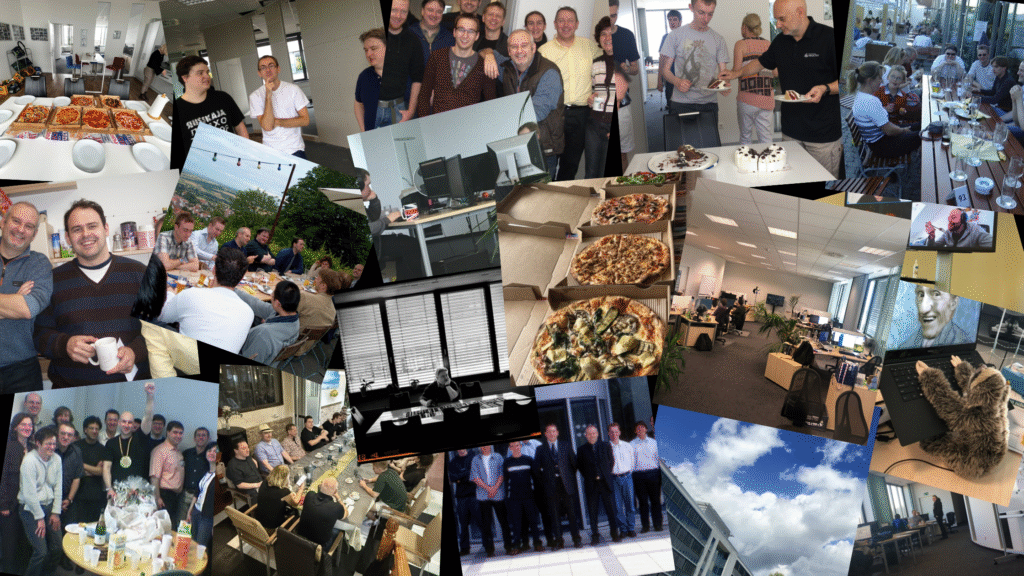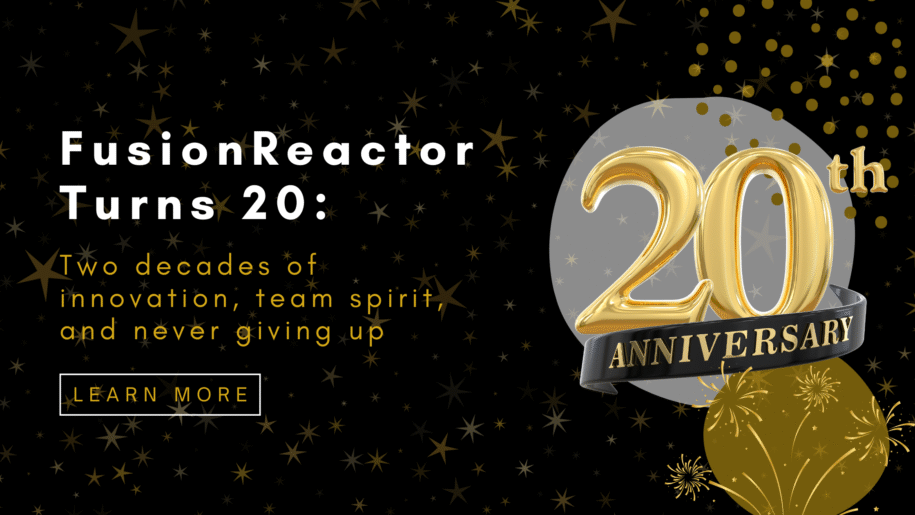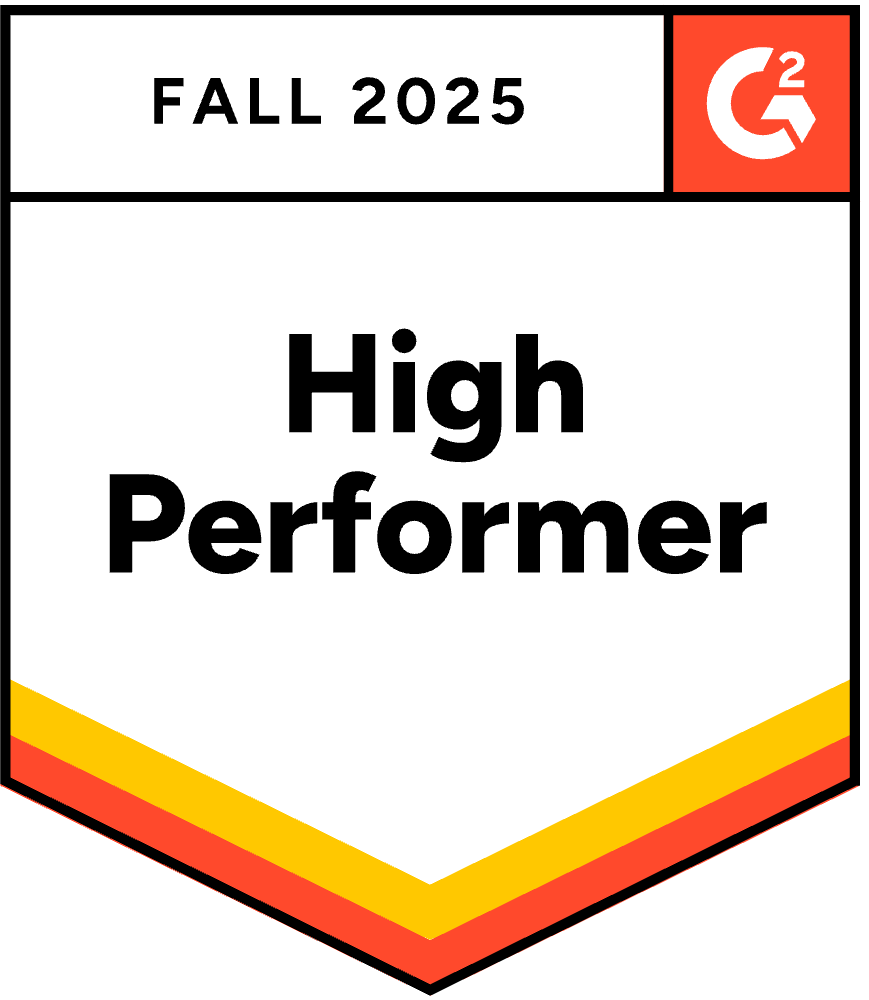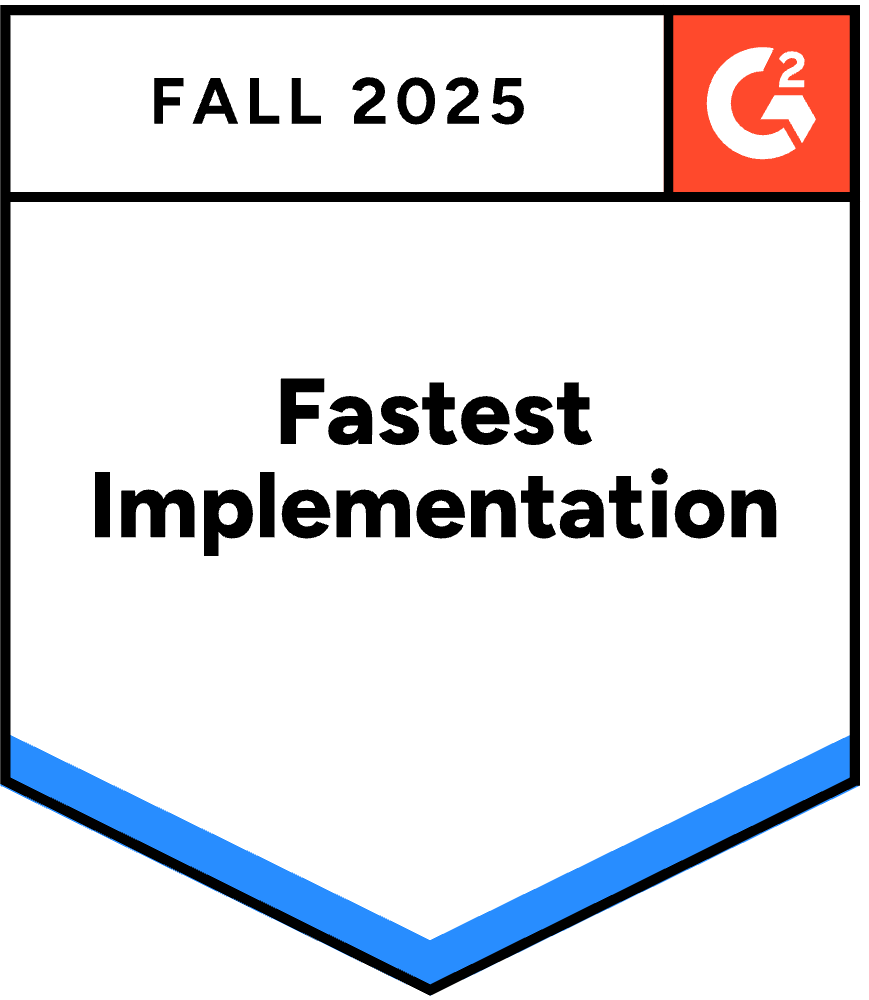This December marks an extraordinary milestone: FusionReactor celebrates 20 years of revolutionizing application performance monitoring. What began in 2005 as a troubleshooting tool has evolved into a comprehensive observability platform trusted by organizations worldwide. But the real story isn’t just about the technology—it’s about the remarkable people who’ve built it, refined it, and never stopped believing in what’s possible.
Ask our long-standing team members to describe FusionReactor’s journey, and you’ll hear phrases like “Never Gave Up,” “Trust, Team Spirit, Innovation,” and “Ever-changing Evolving Growth.” These aren’t just corporate buzzwords—they’re the DNA of a company that’s weathered two decades of technological upheaval while maintaining its soul.
“We always started with what we wanted to have and never questioned whether we could do it,”
recalls John, who joined the company in 1999—even before FusionReactor existed. “With persistence, dogged determination and grit, we could solve anything. Problems that seemed insurmountable were, after a while, solvable.”

From Tornado to Triumph
FusionReactor wasn’t born in isolation. It emerged from necessity—a tool created to troubleshoot Tornado, Intergral’s document management system. That pragmatic origin story set the tone for everything that followed: build what’s needed, make it work brilliantly, and never compromise on quality.
Greg, who joined in August 1999, remembers the pivotal shift:
“The biggest change in the company was going from working on multiple things like website projects, design work, and Tornado to creating FusionReactor—a mass appeal product that really focused the company into a certain area.”
That focus paid off. When the first version of FusionReactor became available for download, the team knew they’d created something special. Bernd, who joined in 2002, names it as his favorite memory:
“When we made the very first version of FusionReactor available for download.”
Twenty Years of Relentless Innovation
The timeline of FusionReactor’s evolution reads like a masterclass in staying ahead of the curve:
2005: The Beginning FusionReactor launches, bringing unprecedented visibility into application performance.
2006: FusionReactor 2 The Enterprise Dashboard arrives, providing real-time health monitoring across production environments from a single window. Extensive data collection includes stack traces, SQL support, and crash protection with automatic “self-healing.”
2008-2011: Building the Foundation FR3 and FR4 expand support across ColdFusion versions and introduce sophisticated memory graphing. The pivotal change to a Java agent architecture sets the stage for everything to come.
2013: The Renaissance (FR5) A complete transformation: responsive UI, end-to-end user monitoring, mobile support for Android and iOS, and licensing built for elastic cloud environments. “The licensing we built for FR8 onwards” remains a point of pride, as one team member notes—”a solution that’s still working six years later.”
2015-2018: Deep Dive (FR6-7) The Debugger and Profiler arrive, giving developers unprecedented insight into code performance.
2019-2023: Cloud Evolution (FR8-11) Docker support, log shipping, and DEEP integration modernize the platform. Support for distributed architectures positions FusionReactor for the cloud-native era.
2024: Breaking Barriers (FR12) The WebSocket Tunnel revolutionizes remote monitoring, enabling seamless access to on-premises UI through FusionReactor Cloud—no complex networking required.
2025: The AI Revolution (FR2025) OpsPilot AI transforms observability, bringing natural language queries, predictive analytics, and intelligent insights to monitoring data. Full OpenTelemetry integration ensures industry-standard compatibility and future-proofing, aligning FusionReactor with the modern observability ecosystem. Enhanced billing, improved documentation, and continuous platform refinement keep FusionReactor at the cutting edge.
The Heart of the Machine
If you ask team members about FusionReactor’s personality, you’ll get wonderfully human answers:
“Quiet and confident, but with the definite impression that they know a lot more than they are letting on. Very patient, too.” – Greg
“Someone who looks more closely and always has an answer—someone you can rely on.” – Bernd
“Organized chaos—unpredictable, slightly nuts, but somehow it all works out in the end.” – Mikey
These descriptions reveal something profound: FusionReactor isn’t just software. It embodies a team that values reliability, depth, and the ability to find order in complexity.

Through Change, Together
The past twenty years haven’t been without challenges. The transition to remote work during COVID marked a turning point. John remembers the bittersweet moment:
“I was very sad and upset to decommission our little data center which had served us well for so many years.”
Yet the team adapted, thrived even. “We became a remote company, and I think we do that pretty well,” John notes. The shift freed the team to focus on what matters most: solving problems and creating value.
The introduction of AI has fundamentally transformed development practices. “We’ve gone from hand-writing code to having it written for us by machine,” John explains.
“We spend more time thinking about how the code should work and the problems that need to be solved. We can see the shape of the forest—the real problem, and how to create real value.”

The Pride of Achievement
Ask these veterans what makes them most proud, and the answers are telling:
John points to groundbreaking technical achievements: the Vortex Engine, FusionDebug 1, and the GCS backend component that enables real-time cloud-to-agent communication. Each innovation was something
“nobody had anything like.”
Ash highlights another key achievement:
“The licensing we built for FR8 onwards and modernizing billing by moving to Stripe.”
But Mikey’s answer captures something equally important:
“Cleaning up our services, moving parts of the stack to open source and Go, and improving speed, stability, and resource usage across the board.”
Pride isn’t just in creating new features—it’s in making everything work better.
Bernd’s answer goes deeper still:
“What makes me most proud is that we have always managed to treat each other like family here at the company.”
The Culture That Built FusionReactor
The memories shared by team members reveal a culture that valued both excellence and enjoyment:
- Half-life deathmatch sessions after work in the early days
- Lunches at the Thai restaurant with its huge aquarium
- Christmas parties with live bands
- Summer picnics at the IBM Club
- The team trip to Málaga, Spain in 2024
“Before we went remote, a lot of us lived in the same town and had pretty much a constant social circle,” Mikey recalls. “We were always hanging out anyway.”
This blend of serious technical work and genuine camaraderie created something special. As Andrea notes with characteristic humor about her 16 years with the company: “Still being able to work with David 😂”

Lessons from Twenty Years
If our team could send messages back to their younger selves, the wisdom is remarkably consistent:
“Be braver and trust yourself more. There is value in what you can do.” – Greg
“It’s okay not to know everything—you’ll figure it out along the way. Fail fast, adapt, move on.” – Mikey
“This was my final year of uni so don’t stress and have fun” – Ash
“Slow and steady wins the race.” – Bernd
“Good choice to join Intergral—and don’t continue to look for full-time jobs. 😄” – Andrea
These aren’t just personal reflections—they’re the principles that built FusionReactor. Trust the process. Value the team. Persist through challenges. Take pride in incremental progress.
Looking Forward
As FusionReactor enters its third decade, the spirit that animated those early days remains intact. The technology has evolved from monitoring ColdFusion applications to providing AI-powered observability across cloud-native architectures. The team has grown from a handful of people in a Böblingen office to a distributed organization spanning continents.
However, some things remain unchanged: our commitment to innovation, our focus on solving real-world problems, and our belief that with enough persistence and team spirit, anything is achievable.
John captures it perfectly with a reference to Tracy Kidder’s Pulitzer Prize-winning book “The Soul of a New Machine”: achieving great things means putting your soul into your work, tackling mind-bending problems, and knowing that your reward for success is simply this—”You get to play again.”
For twenty years, FusionReactor has continued to shine. And if the past is any guide, the next twenty years will be even more remarkable.
Thank You
To everyone who has been part of FusionReactor’s journey—team members past and present, customers who’ve trusted us with their most critical systems, partners who’ve built with us, and the wider community that’s supported us—thank you.
Here’s to organized chaos, quiet confidence, never giving up, and twenty more years of playing the game.











